This is the fifth post in a series on Yemeni dress, customs, and craft written by guest contributor Darleen Wilkerson Karpowicz, an American art teacher who lived in Yemen for five years in the early 1980s. During this time Darleen documented and studied the costume, customs, and crafts of the people she learned to love.
When I lived in Yemen, the regional village dresses and how rural woman’s lives differed from their urban sisters could be understood by looking at the clothes they wore. The lifestyles of village women were such that they wore their decorated dresses for farming, tending animals, shopping and socialising. Women living an urban life had more leisure time and seldom tended to farm work or other rural activities. Yet rural women’s dresses were as opulent and sometimes more so than their urban sisters.
Huggariya – The Stony Place
The farming communities in a large area known as the Huggariya – the ‘Stony Place’, offered an opportunity to view many colourful regional village dresses that were found in the southern rural areas outside of Taiz. Many small villages and groups of homes were scattered throughout this area and many of these folks attended small daily markets which rotated throughout the areas. As one drove an hour or so outside of Taiz the villages were smaller and often far off the main road. As a visitor, one had to go out of the way to visit one of these areas or be specifically interested in rural Yemeni life otherwise there was no reason to explore this area of Yemen.
Shortly after I arrived in Taiz, I learned about this area from a local person in Taiz who thought I would be interested in visiting these villages. I might have been one of the few foreigners who frequented these areas often.
Women’s business
Here the women were responsible for much of the manual labour as many of their men worked in Saudi Arabia or the other Gulf States to send money home to their families. The fields had a manicured and cared for quality as the women spent most of their time tending to livestock, watering the animals, and harvesting the crops. Homes with running water were rare and it was a common sight to see the women gathering water at the nearest water pump or stream carrying it to their homes in large plastic jerry cans sold in the local marketplace. Gathering at the nearby stream to wash clothes served as a meeting place for the women and was equivalent to the urban women’s daily afternoon gatherings where they arranged marriages, traded their livestock, and visited.
The dwellings differed from those in the higher mountainous areas around Taiz as they were single storey homes with small rooms rather than the huge family homes one would see on Jebel Sabir, Jebel Hadnon, or Jebel Habashi. The women’s dresses were eclectic and often fabulous. This area grew coffee, potatoes, onions, and other vegetable crops. Additionally, because of the favourable climate, many tropical fruits were also found including papaya, pomegranate and bananas.
Wadi Dthbab Market
One of the main local small markets, held a few times a week, was in Wadi Dthbab – the ‘Misty Wadi’. I visited this market many times during my stay and after a while, the locals forgot that I was around. My first few visits raised a few eyebrows as they were not used to foreigners coming to their local markets. However, after I explained several times to a few different men who wanted to know what I was doing and what I was interested in, they accepted me.
Although most Yemeni folks did not mind foreigners coming into their villages to see the market, it took a few visits for them to be comfortable with me taking photographs. Yet, when I explained that I was specifically interested in the beautiful dresses of the women they accepted this and mostly left me alone. The women themselves did not seem very concerned about me taking photos. I stood behind a tree at a distance and took photos with my zoom lens for five years. I never saw another foreigner at this marketplace.
The women from Hagda
Some twenty miles from Taiz, in the direction of Mocha on the Hodeidah road was the small town of Hagda. The homes in this area were stone-built and lower than in the surrounding mountains, and the area was sparsely inhabited which was somewhat unusual for this part of Yemen. This area got much less rainfall and was hotter than Taiz – it was a transition zone as one approached the hot humid coastal plain of the Tihamah.
Yet, unique to this climatic and geographical transition area, the Hagda regional dress incorporated elements from both the mountains and the plains. This unique hand-embroidered blouse was worn by all the women who lived in this small area. In my five-year stay in Yemen, this was the only place where I came upon women wearing blouses. It was also unique since the women all paired it with a futah instead of wearing pantaloons as was universally worn by women elsewhere in Yemen. The futah is a large piece of cloth made to specific measurements wrapped around the waist and tucked into itself to keep it in place. It hangs to just below the knees and was otherwise exclusively worn by men from the Tihamah.
The Hagda Blouse
The Hagda blouse was always made from black cotton or sateen material, folded in half to form capped short sleeves with a small V- opening at the neck area to allow for the wearer’s head. The length of the blouse varied but was always worn tucked into the waist of the futah. Despite its length, the garment was unique in that it was worn as a blouse, not as a dress. It was hand-embroidered and not, as was usual, done by machine. Three types of stitches were used – chain stitch, cross stitch, and running stitch. The stitches were embroidered close together in a predominantly mustard or orange coloured cotton thread with red or green accents and they were made by the women in their homes. Like the Habashi dress, this blouse appeared to be worn mostly by the older women as the younger women were already favouring the Zina dress which we have talked about in a previous post. The women who wore these blouses always wore groupings of plastic bracelets on their upper arms and silver and glass bracelets on their wrists.
When I lived in Yemen, it was possible to have an example of the Hagda blouse made to order by one of the women from this area. Futahs were available in every town and village in Yemen and therefore were easy to find. The unusual combination of futah and blouse was only worn in the Hagda area and then only by a small proportion of the women. This combination of clothing items fused mountain attire with that from the hot coastal plain creating a unique regional costume adapted to geographic and climatic conditions. It was one of the remaining vestiges of the Iman’s time that were losing popularity while I was living in Yemen. This ‘transition zone’ outfit is certainly not now being made as it was scarce at the time I lived in Yemen but it was a glimpse of a unique style of dress in rural Yemen before the war.
Leaving the mountains behind
Stay tuned for the next Yemen blog as we start our descent from the mountain areas of the southern part of North Yemen and end up in the sandy plains of Yemen referred to as the Tihamat. Not only is the environment changing, but the dwellings, women’s clothing, and architecture are different from those previously documented. This is a total change of environment. Our first stop will be Zabid. Founded in the ninth century, it became Yemen’s seat of learning and at one time housed many mosques and schools devoted to the study of the Holy Koran.
Find the rest of Darleen’s series on Yemen here: Part 1, Part 2, Part 3, Part 4.
Further Reading
Marjorie Ransom: A specialist on Yemeni silver jewellery and author of Silver Treasures from the Land of Sheba
Sigrid van Roode: Jewellery historian and author of Desert Silver, and Silver & Frankincense
The Author
Darleen Wilkerson Karpowicz is an artist and designer who went to Yemen in 1981 to start an art department at a private Yemeni school. While working in Yemen for five years she met and married her husband (from England) and since that time together they have lived and worked in many developing countries for the past 33 years. Darleen worked predominately in the Middle East, Afghanistan, Pakistan, and Central Asia with mostly Muslim women training them how to adapt their traditional textile-making skills to the modern market.
Copyright to all images belongs to Darleen Wilkerson Karpowicz. Reproduced here with permission.
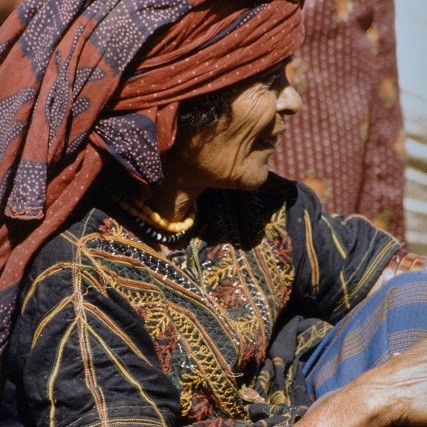

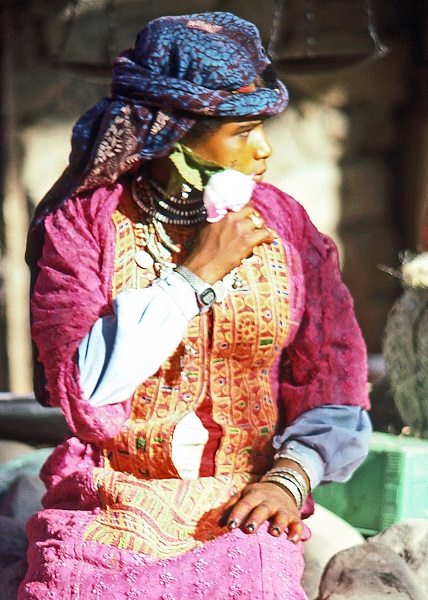
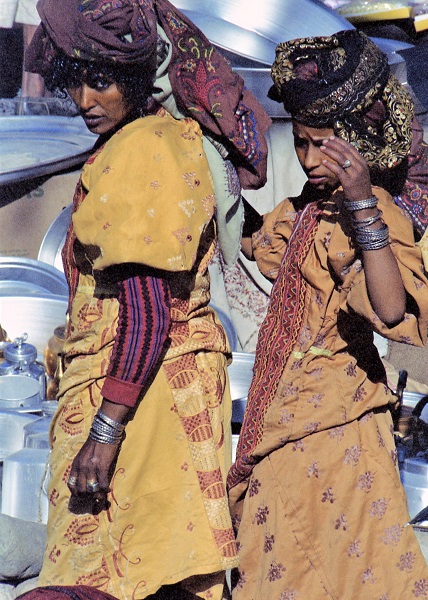
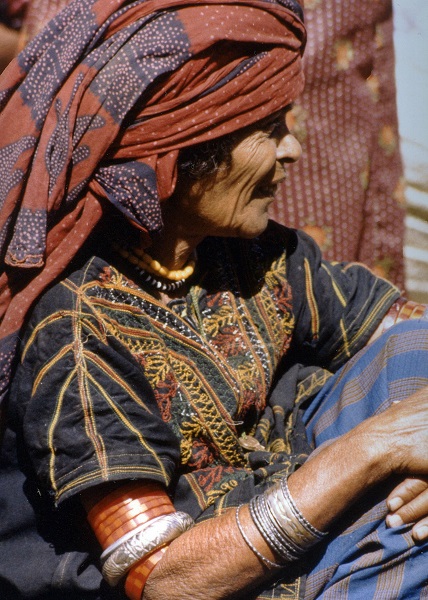


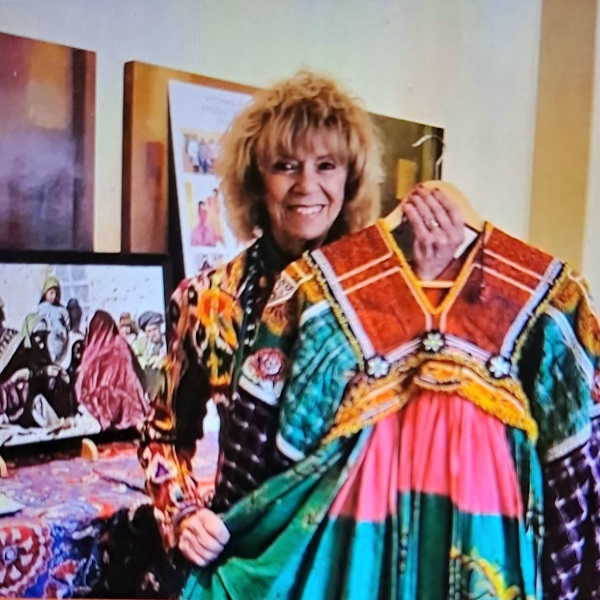

Latest Comments
POST YOUR OPINIONGarments of the Bajil Region - The Zay Initiative
October 31, 2021[…] 1, Part 2, Part 3, Part 4, Part 5, and Part 6 of this fascinating series here. Our next post will focus on Sana’a, Yemen’s […]
The women of Yemen - The Zay Initiative
January 5, 2022[…] Part 1, Part 2, Part 3, Part 4, Part 5, Part 6, Part 7, Part 8, and Part 9 of this fascinating series […]